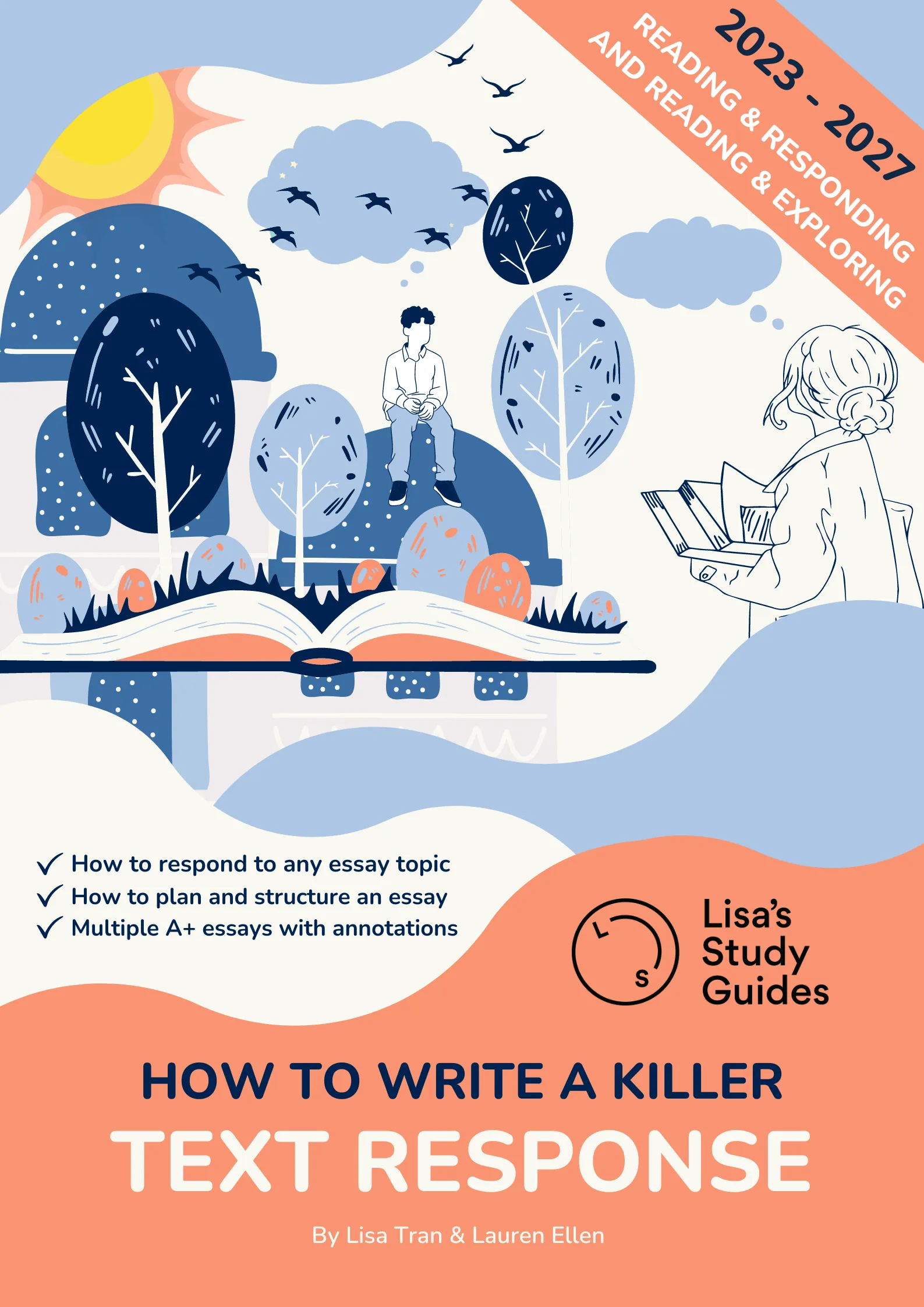Finding out that your school has selected to study a Shakespeare play as your section A text can be a pretty daunting prospect. If I’m honest, I wasn’t all too thrilled upon discovering this either...it seemed as though I now not only had to worry about analysing my text, but also understanding what Shakespeare was saying through all of his old-fashioned words.
However, let’s not fret - in this post, I’ll share with you some Measure for Measure specific advice and tactics, alongside excerpts of an essay of mine as a reference.
Before you start reading, How To Approach Shakespeare: A Guide To Studying Shakespeare is a must read for any student studying Shakespeare.
Historical Context
Having a basic understanding of the historical context of the play is an integral part of developing your understanding of Measure for Measure (and is explored further in Measure for Measure by William Shakespeare). For example, for prompts that open with “What does Shakespeare suggest about…?” or “How does Measure for Measure reflect Shakespeare’s ideas about…?” it can be really helpful to understand Shakespeare’s own position in society and how that influenced his writing.
There’s no need to memorise certain parts of Shakespeare’s history - as that would serve no purpose - just try to gauge an understanding of what life was like in his time. Through understanding Shakespeare’s position in society, we are able to infer his stances on various characters/ideologies in the play.
- Measure for Measure is often regarded as an anti-Puritan satire. Although Shakespeare’s religion has been a subject of much debate and research, with many theories about his faith being brought forward, many believe that he was a secret Catholic. He is believed to be a ‘secret’ Catholic, as he lived during the rise of the Puritans - those who wished to reform the Church of England and create more of a focus on Protestant teachings, as opposed to Catholic teachings. It was often difficult for Catholics to practice their faith at this time.
- Angelo and Isabella - particularly Angelo, are believed to embody puritanism, as shown through their excessive piety. By revealing Angelo to be “yet a devil,” though “angel on the outward side,” Shakespeare critiques Puritans, perhaps branding them as hypocritical or even unhuman; those “not born of man and woman.” Thus, we can assume that Shakespeare would take a similar stance to most of us - that Angelo wasn’t the greatest guy and that his excessive, unnatural and puritanical nature was more of a flaw than a virtue.
Tips for Moving Past the Generic Examples/Evidence Found in the Play
It’s important to try and stand out with your examples in your body paragraphs. If you’re writing the same, simple ideas as everyone else, it will be hard for VCAA assessors to reward you for that. Your ideas are the most important part of your essay because they show how well you’ve understood and analysed the text - which is what they are asking from you, it’s called an ‘analytical interpretation of a text,’ not ‘how many big words can you write in this essay.’ You can stand out in Measure for Measure by:
1. Taking Note of Stage Directions and Structure of Speech
Many students tend to simply focus on the dialogue in the play, but stage directions can tell you so much about what Shakespeare was really trying to illustrate in his characters.
- For example, in his monologue, I would often reference how Angelo is alone on stage, appearing at his most uninhibited, with his self-interrogation revealing his internal struggle over his newfound lust for Isabella. I would also reference how Shakespeare’s choice of syntax and structure of speech reveal Angelo’s moral turmoil as he repetitively asks himself “what’s this?” indicating his confusion and disgust for his feelings which “unshapes” him.
- Isabella is shown to “[kneel]” by Mariana at the conclusion of the play, in order to ask for Angelo’s forgiveness. This detail is one that is easily missed, but it is an important one, as it is an obvious reference to Christianity, and symbolises Isabella’s return to her “gentle and fair” and “saint” like nature.
2. Drawing Connections Between Characters - Analyse Their Similarities and Differences.
Drawing these connections can be a useful way to incorporate other characters not necessarily mentioned in your prompt. For example, in my own English exam last year, I chose the prompt “...Power corrupts both Angelo and the Duke. Do you agree?” and tried to pair Angelo and Isabella, in order to incorporate another character into my essay (so that my entire essay wasn’t just about two characters).
- A favourite pair of mine to analyse together was Angelo and Isabella. Although at first glance they seem quite different, when you read into the text a little deeper you can find many similarities. For example, while Angelo lives alone in his garden, “succumbed by brick,” requiring “two keys” to enter, “nun,” Isabella, wishes to join the nuns of Saint Clare where she “must not speak with men” or “show [her] face.” Shakespeare’s depiction of the two, stresses their seclusion, piety and restriction from the “vice” plaguing Vienna. What’s important about this point is that you can alter your wording of it to fit various points that you may make. For example, you could use this example to prove to your assessor how Isabella’s alignment with Angelo signals Shakespeare’s condemnation of her excessive puritanical nature (as I did in my body paragraph below) or, you could use these same points to argue how Angelo was once indeed a virtuous man who was similar to the “saint” Isabella, and that it was the power that corrupted him (as you could argue in the 2019 prompt).
- Another great pair is the Duke and Angelo. Although they certainly are different in many ways, an interesting argument that I used frequently, was that they both were selfish characters who abused their power as men and as leaders in a patriarchal society. It is obvious where Angelo did this - through his cruel bribery of Isabella to “lay down the treasures of [her] body,” however the Duke’s behaviour is more subtle. The Duke’s proposal to Isabella at the conclusion of the play, as he asks her to “give [him her] hand,” in marriage, coincides with the revelation that Claudio is indeed alive. It appears that the Duke has orchestrated the timing of his proposal to most forcefully secure Isabella and in this sense, his abuse of power can be likened to Angelo’s “devilish” bribery. This is as, through Shakespeare’s depiction of Isabella, it is evident that she has little interest in marriage; she simply wishes to join a convent where she “must not speak with men,” as she lives a life of “strict restraint.” The Duke is aware of this, yet he demands Isabella to “be [his]”- wishing to take her from her true desire and Shakespeare is able to elucidate Isabella’s distaste through her response to this: silence. By contrasting Isabella’s once powerful voice - her “speechless dialect” that can “move men” - with her silence in response to the Duke’s proposal, Shakespeare is able to convey the depth of the Duke’s selfishness and thus his similarity to Angelo.
We've got a character list for you in Measure for Measure by William Shakespeare (just scroll down to the Character section).
What’s important to realise about these bits of evidence is that you can use them in so many different prompts, provided that you tailor your wording to best answer the topic. For example, you could try fitting at least one of the above examples in these prompts:
- ‘Give me your hand and say you will be mine…’ The characters in ‘Measure for Measure’ are more interested in taking than giving. Discuss.
- ‘More than our brother is our chastity.' Explore how Shakespeare presents Isabella's attitude to chastity throughout Measure for Measure.
- ‘I have seen corruption boil …' To what extent does Shakespeare explore corruption in Measure for Measure, and by what means?
- ‘Measure or Measure presents a society in which women are denied power.’ Discuss.
How To Kick Start Your Essay with a Smashing Introduction
There’s no set way on how to write an introduction. Lots of people write them in many different ways and these can all do well! This is the best part about English - you don’t have to be writing like the person sitting next to you in order to get a good mark. I personally preferred writing short and sweet introductions, just because they were quick to write and easy to understand.
For example, for the prompt...
“...women are frail too.”
To what extent does ‘Measure for Measure’ examine the flaws of Isabella?
...my topic sentences were...
- Isabella is depicted as a moral, virtuous and pious woman, but it is this aspect of her nature that paradoxically aligns her with the “tyrannous” Angelo.
- Shakespeare explores the hypocrisy and corruption of Isabella as a flaw, as she deviates from her initially “gentle and fair” nature.
- Despite exploring Isabella’s flaws to a large degree, Shakespeare does indeed present her redemption at the denouement of the play.
...and my introduction was:
William Shakespeare’s play, ‘Measure for Measure’ depicts a seventeenth century Viennese society in which disease, misconduct and licentiousness are rife. It is upon a backdrop of such ordeals that Shakespeare presents the character of Isabella, who is initially depicted as of stark contrast to the libertine populate of Vienna. To a considerable extent, ‘Measure for Measure’ does indeed examine the flaws of the “gentle and fair” Isabella, but Shakespeare suggests that perhaps she is not “saint” nor “devil,” rather that she is a human with her own flaws and with her own redeeming qualities.
Instead of rewording my topic sentences, I touched on them more vaguely, because I knew that I wouldn’t get any ‘extra’ points for repeating them twice, essentially. However, if you feel more confident in touching on your topic sentences more specifically - go ahead!! There are so many different ways to write an introduction! Do what works for you!
Body Paragraphs
This body paragraph included my pairing between Angelo and Isabella. My advice would be to continue to incorporate the language used in the prompt. In this paragraph, you can see me use the word “flaw” quite a bit, just in order to ensure that I’m actually answering the prompt, not a prompt that I have studied before.
Isabella is depicted as a moral, virtuous and pious woman, but it is this aspect of her nature that paradoxically aligns her with the “tyrannous” Angelo. Where Angelo is “of ample grace and honour,” Isabella is “gentle and fair.” Where Angelo believes in “stricture and firm abstinence,” Isabella too believes that “most desire should meet the full blow of justice.” This similarity is enhanced by their seclusion from the lecherous society in which they reside. Angelo lives alone in his garden, “succumbed by brick,” requiring “two keys” to enter, whilst Isabella desires the life of a nun where she “must not speak with men” or “show [her] face.” This depiction of both Angelo and Isabella stresses their seclusion, piety and restriction from the “vice” that the libertine populate is drunk from. However, Shakespeare’s revelation that Angelo is “yet a devil” though “angel on the outward side,” is perhaps Shakespeare’s commentary on absolute stricture being yet a facade, a flaw even. Shakespeare presents Isabella’s chastity and piety as synonymous with her identity, which ultimately leaves her unable to differentiate between the two, as she states that she would “throw down [her] life,” for Claudio, yet maintains that “more than our brother is our chastity.” Though virtuous in a sense, she is cruel in another. Although at first glance, Shakespeare’s depiction of Isabella’s excessive puritanical nature appears to be her virtue, by aligning her with the “devil” that is Angelo, it appears that this is indeed her flaw.
Conclude Your Essay by Dazzling Your Assessor!
My main tip for a conclusion is to finish it off with a confident commentary of the entire piece and what you think that the author was trying to convey through their words (in relation to the topic). For example, in pretty much all of my essays, I would conclude with a sentence that referenced the entire play - for example, how it appeared to be such a polarising play, with largely exaggerated, polarising characters/settings (eg. Angelo and the Duke, or the brothels that stood tall next to the monastery):
Ultimately, Shakespeare’s play ‘Measure for Measure,’ depicts Isabella as a multifaceted character. She is not simply one thing - not simply good nor bad - her character’s depiction continues to oscillate between the polar ends of the spectrum. Although yes, she does have flaws, so too does she have redeeming qualities. Though at times deceitful and hypocritical, she too is forgiving and gentle. Thus, as Shakespeare’s play, ‘Measure for Measure,’ does centre on polarising characters in a polarising setting, perhaps through his exploration of Isabella’s flaws alongside her virtues, he suggests that both the good and the bad inhabit us.
Measure for Measure is usually studied in the Australian curriculum under Area of Study 1 - Text Response. For a detailed guide on Text Response, check out our Ultimate Guide to VCE Text Response.













.jpg)